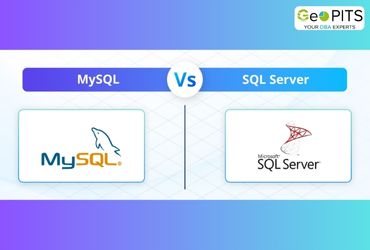MySQL's InnoDB storage engine powers many high-performance applications. To optimize database speed, reliability, and resource usage, tuning InnoDB parameters is crucial. This guide walks through key parameters to fine-tune your MySQL InnoDB setup.

1. innodb_buffer_pool_size
The innodb_buffer_pool_size parameter controls the amount of memory InnoDB uses to cache data and indexes. For heavy workloads, this is one of the most critical settings.
Recommendation:
- Set to 60-80% of available memory on a dedicated MySQL server.
Example:
[mysqld]
innodb_buffer_pool_size=16G
Monitoring: Check buffer pool efficiency using:
SHOW ENGINE INNODB STATUS;
2.innodb_log_file_size
This parameter defines the size of each InnoDB redo log file. Larger log files allow InnoDB to process more transactions before flushing, reducing disk I/O.
Recommendation:
Set it to 25-50% of your buffer pool size.
Example:
[mysqld]
innodb_log_file_size=4G
Warning: Changing this parameter requires stopping MySQL, deleting old log files, and restarting.
3. innodb_flush_log_at_trx_commit
This setting controls how often InnoDB flushes logs to disk. It affects durability vs. performance.
Options:
- 0 - Logs are written and flushed once per second (best performance, risk of data loss).
- 1 - Logs flushed to disk at each commit (ACID compliant, slower).
- 2 - Logs written at each commit but flushed once per second (balance of safety and speed).
Recommendation: For performance-sensitive but non-critical data, use:
[mysqld]
innodb_flush_log_at_trx_commit=2
4. innodb_io_capacity
This controls the I/O operations per second (IOPS) that InnoDB can use for background tasks like flushing dirty pages.
Recommendation:
Set it to the IOPS capacity of your storage.
Example:
[mysqld]
innodb_io_capacity=3000
Tip: High-performance SSDs may support values over 10000.
5. innodb_adaptive_hash_index
Adaptive hash indexing speeds up read operations by creating a hash index for frequently accessed pages.
Recommendation:
- Enable it for read-heavy workloads.
- Disable it if experiencing contention in multi-core environments.
[mysqld]
innodb_adaptive_hash_index=ON
6.innodb_read_io_threads and innodb_write_io_threads
These parameters manage the number of background threads handling read and write I/O operations.
Recommendation:
- For multi-core servers, increase these values (4-8 for SSDs).
[mysqld]
innodb_read_io_threads=8
innodb_write_io_threads=8
7. innodb_log_buffer_size
This buffer holds transaction logs before they are written to disk. Large values improve performance for large transactions.
Recommendation:
- Set between 16M and 256M for heavy workloads.
[mysqld]
innodb_log_buffer_size=128M
8. innodb_flush_method
This determines how InnoDB interacts with the operating system for flushing data.
Recommendation:
- For SSDs or fast disks, use O_DIRECT to bypass OS caching.
[mysqld]
innodb_flush_method=O_DIRECT9. innodb_thread_concurrency
Limits the number of concurrently executing threads within InnoDB.
Recommendation:
- Modern MySQL versions manage this automatically; leave it unset or tune for specific workloads.
Conclusion:
Performance tuning is an iterative process. Regularly monitor metrics using SHOW ENGINE INNODB STATUS and adjust these parameters as workloads evolve. With careful tuning, you can dramatically improve MySQL performance and stability.




.jpg)


